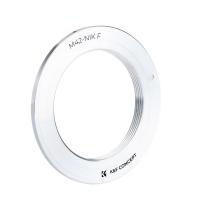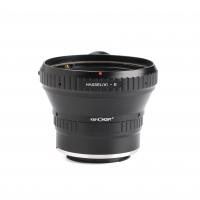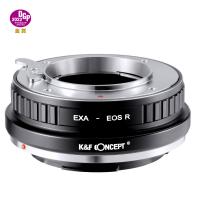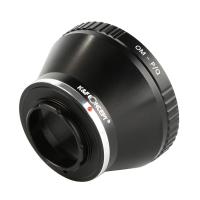How To Build An Electron Microscope ?
Building an electron microscope is a complex and highly specialized process that requires advanced knowledge in physics, engineering, and materials science. It involves designing and constructing a vacuum chamber, electron gun, electron lenses, and detectors, as well as integrating sophisticated control and imaging software.
The process typically begins with the selection of appropriate materials and components, followed by the assembly and testing of the various subsystems. The electron gun generates a beam of electrons that is focused and accelerated by the lenses, and then directed onto the sample. The detectors capture the scattered and emitted electrons, which are then processed and displayed as an image.
Building an electron microscope requires a significant investment of time, resources, and expertise, and is typically undertaken by specialized research institutions or companies. It is not a project that can be easily accomplished by individuals or hobbyists.
1、 Electron Sources
How to build an electron microscope:
Building an electron microscope is a complex process that requires specialized knowledge and equipment. Here are the basic steps involved:
1. Electron Sources: The first step in building an electron microscope is to create an electron source. This involves heating a filament to produce electrons, which are then accelerated towards a sample using an electric field. There are several types of electron sources, including tungsten filaments, lanthanum hexaboride (LaB6) cathodes, and field emission sources.
2. Electron Lenses: Once the electrons are produced, they need to be focused onto the sample using a series of electron lenses. These lenses use magnetic fields to bend and focus the electron beam. The most common types of lenses used in electron microscopes are condenser lenses, objective lenses, and projector lenses.
3. Sample Preparation: Before the sample can be imaged, it needs to be prepared. This typically involves cutting the sample into thin sections and coating it with a thin layer of metal to improve contrast and conductivity.
4. Imaging: Once the sample is prepared, it can be imaged using the electron microscope. The electron beam is scanned across the sample, and the resulting signal is detected and used to create an image. There are several types of electron microscopy, including transmission electron microscopy (TEM), scanning electron microscopy (SEM), and scanning transmission electron microscopy (STEM).
5. Data Analysis: After the images are acquired, they need to be analyzed. This typically involves using specialized software to measure the size, shape, and composition of the sample.
The latest point of view in electron microscopy is the development of new techniques that allow for higher resolution imaging and faster data acquisition. For example, cryo-electron microscopy (cryo-EM) is a technique that allows samples to be imaged at near-atomic resolution without the need for sample preparation. Additionally, advances in detector technology have allowed for faster data acquisition, which is critical for studying dynamic processes in real-time.

2、 Electron Lenses
How to build an electron microscope:
Building an electron microscope is a complex process that requires specialized knowledge and equipment. Here are the basic steps involved:
1. Create a vacuum chamber: The first step in building an electron microscope is to create a vacuum chamber. This chamber must be able to maintain a vacuum of at least 10^-6 torr to prevent air molecules from interfering with the electron beam.
2. Generate an electron beam: The next step is to generate an electron beam. This is typically done using a heated filament or a field-emission gun. The electron beam must be focused and accelerated using electromagnetic lenses and an electron gun.
3. Direct the electron beam: Once the electron beam is generated, it must be directed towards the sample being studied. This is typically done using a series of electromagnetic lenses that can focus and steer the beam.
4. Detect the electrons: As the electron beam interacts with the sample, some of the electrons will be scattered or absorbed. These electrons can be detected using a variety of techniques, including secondary electron imaging, backscattered electron imaging, and energy-dispersive X-ray spectroscopy.
5. Process the data: The final step in building an electron microscope is to process the data collected by the detectors. This data can be used to create images of the sample being studied, as well as to analyze its chemical composition and structure.
Electron Lenses:
Electron lenses are a type of electromagnetic lens that can be used to focus and manipulate electron beams. These lenses work by using magnetic fields to bend the path of the electrons, allowing them to be focused or defocused as needed.
Recent advances in electron lens technology have led to the development of aberration-corrected electron lenses, which can correct for distortions in the electron beam caused by lens imperfections. This has allowed for higher-resolution imaging and analysis of samples at the atomic scale.
In addition, electron lenses are being used in a variety of applications beyond electron microscopy, including in the development of electron beam lithography for nanofabrication and in the creation of electron beam sources for particle accelerators.

3、 Sample Preparation
Sample Preparation is a crucial step in building an electron microscope. The quality of the sample preparation directly affects the quality of the images obtained from the electron microscope. The first step in sample preparation is to select the appropriate sample. The sample should be thin enough to allow electrons to pass through it, and it should be stable enough to withstand the vacuum conditions of the electron microscope.
Once the sample is selected, it needs to be prepared for imaging. This involves several steps, including fixation, dehydration, embedding, sectioning, and staining. Fixation involves preserving the sample in a stable state, usually by using a chemical fixative. Dehydration involves removing water from the sample, usually by using a series of alcohol washes. Embedding involves embedding the sample in a resin, which provides support for the sample during sectioning. Sectioning involves cutting the sample into thin sections, usually using a microtome. Staining involves adding a contrast agent to the sample, which enhances the visibility of the sample under the electron microscope.
The latest point of view in sample preparation is the use of cryo-electron microscopy (cryo-EM). Cryo-EM involves freezing the sample in a thin layer of ice, which preserves the sample in a near-native state. This technique has revolutionized the field of structural biology, allowing researchers to obtain high-resolution images of biological molecules and complexes. Cryo-EM has become an increasingly popular technique in recent years, and many electron microscopes are now equipped with cryo-EM capabilities.

4、 Detectors and Imaging
Detectors and Imaging are crucial components of an electron microscope. To build an electron microscope, one needs to start with a vacuum chamber, an electron source, and a series of electromagnetic lenses to focus the electron beam. The electron source can be a tungsten filament or a field-emission gun, which emits electrons when a high voltage is applied.
Next, detectors are needed to capture the electrons that pass through the sample. These detectors can be scintillators, which convert the electrons into light, or solid-state detectors, which convert the electrons into electrical signals. The imaging system can be a fluorescent screen or a digital camera, which captures the signals from the detectors and produces an image of the sample.
In recent years, there have been significant advancements in electron microscopy technology. For example, aberration-corrected electron microscopy has enabled researchers to achieve higher resolution images than ever before. Additionally, cryo-electron microscopy has allowed for the imaging of biological samples at near-atomic resolution, providing new insights into the structure and function of proteins and other biomolecules.
Overall, building an electron microscope requires a combination of technical expertise and specialized equipment. However, the advancements in electron microscopy technology have made it an increasingly powerful tool for scientific research and discovery.




















![Supfoto Osmo Action 3 Screen Protector for DJI Osmo Action 3 Accessories, 9H Tempered Glass Film Screen Cover Protector + Lens Protector for DJI Osmo 3 Dual Screen [6pcs] Supfoto Osmo Action 3 Screen Protector for DJI Osmo Action 3 Accessories, 9H Tempered Glass Film Screen Cover Protector + Lens Protector for DJI Osmo 3 Dual Screen [6pcs]](https://img.kentfaith.de/cache/catalog/products/de/GW41.0076/GW41.0076-1-200x200.jpg)








